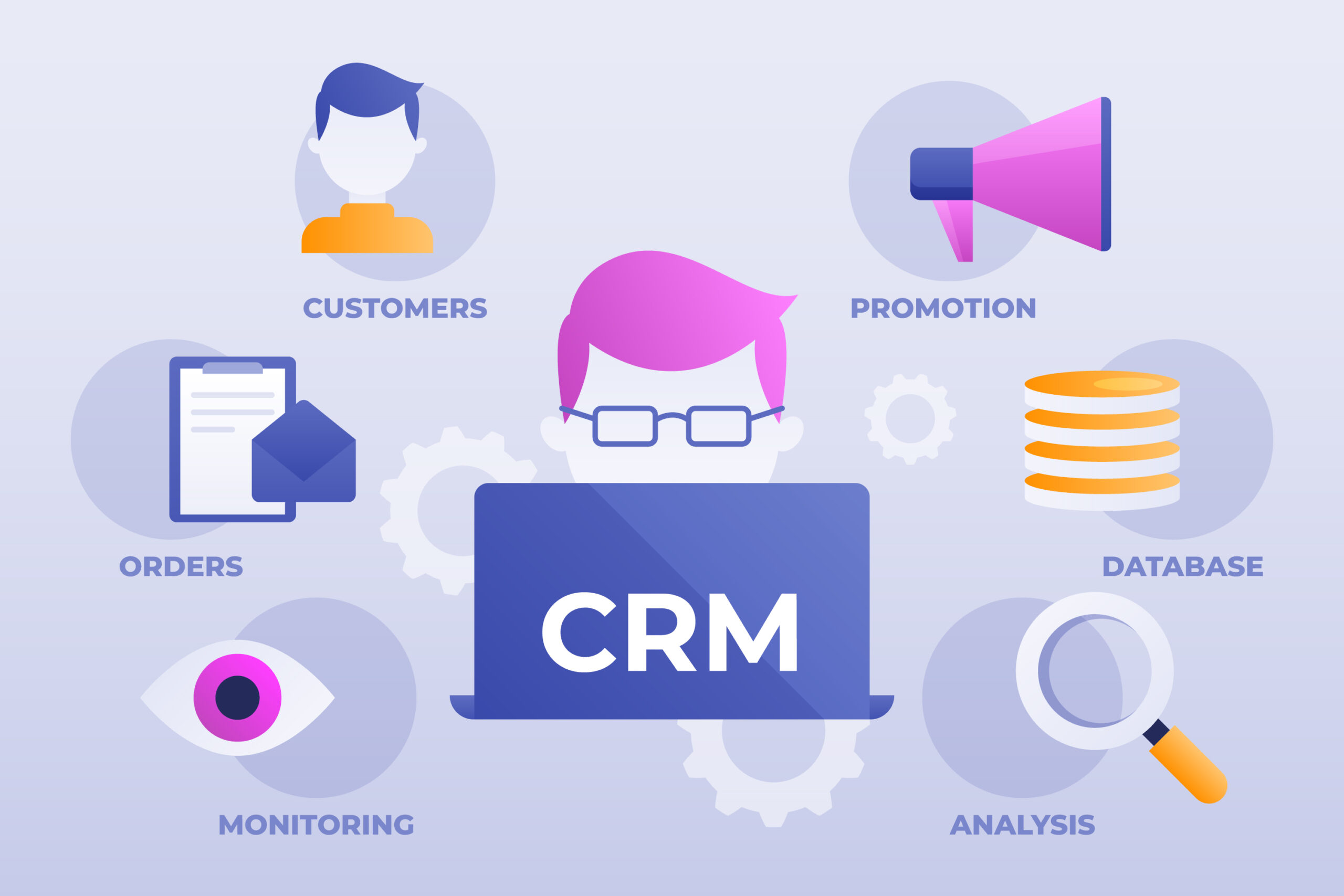Customer Relationship Management, or CRM, is a technology that manages all matters related to interactions between companies and customers. The success of this kind of technology is driven by the right CRM strategy design and implementation.
The use of CRM strategy design and implementation can perfectly support the running of a company. In addition, it can increase the company’s profits, minimize costs, and prioritize good relationships with customers. Therefore, it can not be denied that many companies are using CRM technology nowadays.
What is Customer Relationship Management (CRM)?
Generally, Customer Relationship Management stands for CRM. It is a win-win solution that combines practices, strategies, as well as technologies. The company typically uses it to manage and analyze customer data throughout its life cycle.
The main purpose of CRM utilization is not only as a support tool. Rather, it also provides good service improvements for customers, which may increase the company’s sales. The CRM system collects all customer data within a company through various channels. For example, telephone, live chat, direct email, social networks, and the company’s website.
Nonetheless, using this kind of technology without a CRM strategy design and implementation will not run smoothly. The idea development and in-depth analysis related to the strategy and implementation of CRM can bring the best result for the company further.
Facts about CRM Strategy Design and Implementation
In its mechanism, Customer Relationship Management (CRM) has a positive impact on companies and consumers. Hence, there are a lot of companies that have achieved significant results. Even so, it turns out that several companies experience difficulties and constraints due to the less-than-optimal use of CRM technology.
Some of those obstacles include excessive costs, integration challenges, and bad consumer acceptance. To overcome the problems, the company should create along with the execution of appropriate CRM strategy design and implementation.
So, What does CRM Strategy Design and Implementation Refer to?
Basically, it is a process that companies use to build and manage relationships with customers. The main objectives of these strategies and implementations are to increase customer satisfaction, retain customers, and generate business growth as well.
8 Stages of CRM Strategy Design and Implementation
Furthermore, the following discussion will explain the eight CRM strategy designs and implementations in more detail.
1. Define the CRM’s Strategy
First of all, the use of CRM must contain some elements of business goals. For instance, the financial concept, consumer extension, and employee growth goals. The purpose of developing business goals is to give an obvious focus, inspire the company’s employees, or even put a company’s sales target.
The first step to understanding CRM strategy designs and implementation is to ensure the alignment of the company’s vision and mission. After that, the company’s team can determine whether the strategies suit the business. If it is not, the company’s team can try other strategies until they get the best results.
2. Set Up the Target Audience
The second step is to set up the target audience as a representation of an ideal customer in the company’s market research.
The existence of the buyers’ persona is essential because they assist in creating a good relationship and attracting a new project. This is the main key to ensuring that the company’s employees are focused to understand better the customer’s needs and expectations.
Providing the exact target will also ascertain the company’s market research is on the right track.
3. Establish the Customer’s Journey
Mapping a customer’s journey illustrates the brand’s engagement throughout the way customers purchase. This kind of CRM strategy design and implementation helps the company’s team to master customers’ characteristics.
There are four phases belong to the customer’s journey, including awareness, consideration, decision, and loyalty. To maintain customer loyalty, it is essential to continually engage with them by asking for feedback or even producing quality content.
4. Describe the Customer’s Experience
Creating and treating customers with the best experience within the business scope is more important than ever. Customer experience is a measurement of a company’s performance by buyers through service at sales and quality of goods.
Providing an amazing customer experience will increase customer retention, and brand loyalty, as well as a positive affirmation. Therefore, every company must develop the right strategy starting from pre-sale, sales process, and even after-sale to attract customers.
5. Study the Current Market
To compete in the current market, the company must develop products and services that set them apart from its competitors and attract more customers.
Then, working perfectly on CRM strategy design and implementation is crucial in order to strengthen the market’s concept.
6. Understand the Product
Before launching a product, it is necessary to deepen the product to make it more attractive to customers. Ensure the company’s product fulfills several elements, such as messages, benefits, and reasons for customers to buy the product.
Thus, it is essential to have an internal discussion within a company to discuss the matter. Hence, all the employees share the same goal. Besides, it’s also a good chance to apply the best approach for communicating with customers.
7. Invest a CRM Software
Using the software is the most effective way so far to investigate the CRM strategy design and implementation. This kind of modern technology facilitates companies in sorting data and reducing labor-intensive tasks.
Moreover, it also helps the company to provide useful insights and create highly intelligent recommendations for a sales funnel. Due to the company’s goal, make sure to find suitable software with a good price, function, and ease of use. Once the installation is complete, designate the admin to drive CRM Software.
8. Arrange the Key Performance Indicators (KPIs)
Lastly, a good strategy and implementation without solid teamwork means nothing. Therefore, it is necessary to ensure the company’s team works efficiently. The SMART (Specific, Measurable, Achievable, Realistic, Time-bound) goals may help them to achieve the targets.
Could the Process Ease Company in Running Their Campaign As Well?
While CRM is the approach or technology, the CRM Strategy design and implementation is the stages and process companies should have for better operational activities.
Furthermore, suppose the company manages the eight stages and the CRM tools. In that case, it helps increase the company’s value to the public and allows them to carry out the marketing campaign through all different kinds of activities.
Bagikan









